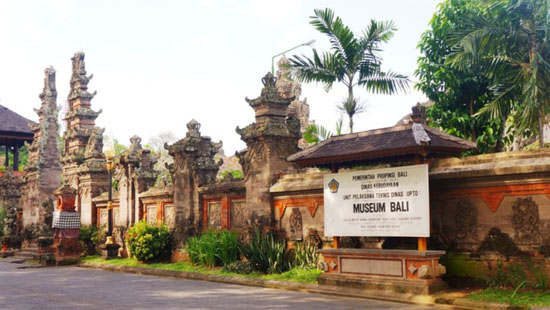Bali Museum in Denpasar Bali

If you are in Denpasar and which see some “real”
Balinese history, don’t miss out on the Bali Museum.
It is located on the eastern side of the “Lapangan Puputan
Badung”, a memorial park at the end of Gajah Mada Street,
Denpasar.
The museum contains a collection of Balinese artifacts dating
back to prehistoric time up till the 20th century. Ancient masks,
tools, woodcarvings, jewelry, Neolithic stone implements, megalithic
coffins, agricultural tools, even cages for fighting crickets
can be found on display in its four separate buildings. The architectural
design is a combination between two Balinese structures, the
temple and the palace.
The history of the museum started back in 1910, initiated by
W.F.J.Kroon, a Dutch resident in Bali at the time. Not until December
8th, 1932, did the official opening of the museum take place.
Because of its rapid development, on January 5th, 1966 the Bali
Museum was transferred to the highest foundation coordinating
all national museums.
The Bali Museum’s four buildings survey the Balinese
ancestors from prehistoric times until now. In the Karangsem building,
witness a collection of ethnographic objects, ceramics and tools
dating back to the Neolithic era (2600 – 600 BC) and the
megalithic Era (300 BC). See the sarcophagus tomb (200 BC) a tight
fitting coffin in the shape of a giant egg. This building also
shows a range of ceremonial paraphernalia and religious instrument
used by high priests.
The Tabanan
building, located on the north end of the museum grounds, exhibits
a contribution give by the king of Tabanan’s family. A “Bale
Bengong” (an outdoor open lounge elevated above the ground
without walls), which has been used by the king family to oversee
ceremonies, rest alongside the Tabanan building. Inside is a collection
of masks and customs used to perform ceremonial and entertaining
dancer. Carving in Bali has existed since ancient times, the Buleleng
building (whose entrance marked by 2 Dutch bronze cannons), contains
a collection of 123 rare pieces. Once inside the building you
will be amazed at the fascinating exhibitions of carved remains
by Bali’s fore fathers. Several materials have been used
for carving which were clay, stone, wood, bone, horn and coconut.
The Gedung Timur is building is the newest edition which has
2 floors. Its theme is the evolution of painting in Bali, including
the classic painting era till modern times. The first floor has
a collection of paintings from various districts in Bali, highlighting
Kamasan
art from the Klungkung area. The Kamasan painting theme involves
Gods and characters from Hindu
stories. Painting from Batuan, Gianyar
can also be found here, which are considered to be the most famous
in Bali because of their influence by famous European painters
like Walter Spies, Rudolf Bonnet and Arie Smith.The Museum Bali
is open every day except Mondays. Museum hours are from 8 till
2 pm.














